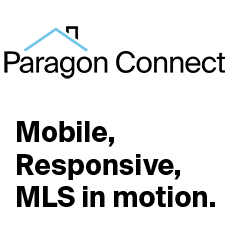I’ve had many inquires from other vendors asking my opinion on “MLS App Stores”. All of these inquires were either related to FBS’s Spark Platform (“Spark”) or Clareity’s ClareityStore. With that in mind I thought I would put together a post to give a little comparison and insight to both solutions. I do encourage you to get the information for yourself. Both solutions have put up very informative websites:
http://ClareityStore.com
http://Sparkplatform.com
At this time Clareity has yet to launch a ClareityStore implementation. But many MLS providers on their list are some of the largest in the country. So, I am basing my information found on the above website and conversations with Clareity staff.
In contrast Spark has close to 70 MLS providers (mostly smaller, but some larger) up and running. You should also know that I shared this post with both companies ahead of time to make sure I had my facts right. But I’m sure I missed something so I will be providing updates/corrections as I get feedback.
Some longtime vendors have argued that they already know how to sell to larger MLS providers. In that case the Spark platform might be a good solution to expanded their market. I think new vendors will appreciate all options. Which is why I think there is room for both solutions. Now let’s get into it.
To me the single biggest difference between both solutions is the Spark API. Clareity does not at this time have any solution of integrated MLS data in to your software application. Like many others, Clareity hopes RESO will come to the rescue, at some point, with a data standard for all of real estate. Other vendors don’t care because they already have a method for integrating MLS data in to their app. As said previously, new vendors will appreciate not spending anytime worrying about data integration and instead focusing on creating great software applications. With Cloud CMA we have a hybrid solution that I will talk about later in this post.
Below is a simple comparison chart that highlight the key aspects of both solutions.

*Spark’s revenue share is only 10% if you are using other methods of getting MLS data, not their Spark API.
Other Important factors:
Exclusivity
Neither solution requires you to be exclusive. Meaning if I sign up for Spark or the ClareityStore I can also sell my product through other channels. This is important, if you already have an outside sales force who is successful at office meetings, live presentations, or trade shows they are not required to use this store.
Data integration
While both solutions require you implement a SSO method (Oauth or SAML) in the case of Spark you are not required to use their API for data integration.
ClareityStore has a Turbo Seller Plan, which also offers 10% revenue share but requires 100% revenue share for the first 3 months of subscription.
Use case example: Cloud CMA
In the case of Cloud CMA we continue to use our own RETS integration with our existing MLS customers, even if they have opted for the Spark Platform. With new MLS providers on the Spark Platform, , that our not our customers, we have taken advantage of the Spark API. This hybrid solution has worked well because it lets up tap in to the “long tail” of MLS providers we typically would not have integrated with due to their size/location/time.
Alternative uses for MLS App Stores.
In the future MLS App Stores may also help in decreasing the “friction” of customers signing up for your service. Here are some classic scenarios.
Outside Sales.
What I mean by this is that in any outside or inside sales effort there is always that moment of truth, where they ask the fateful question. “VISA, Mastercard, or American Express?” In an live presentation environment rather than having them fill out a long order form with name, address, phone number, email address, etc wouldn’t it be a lot simpler to direct them to a web page and they just click a single button and “Boom” you’re done? I see a lot of agent bringing their iPads or notebooks to presentations nowadays. Could this increase your closing percentage from 50% to 60%? I think it might if implemented correctly.
Inside Sales.
One of the big factors of selling over the phone is trust. Sometimes agents are very wary of who is calling them, much less giving them credit card information over the phone. Imagine a situation where the rep is directed them to their MLS system (which they trust) and having them putting in a special promo code and clicking a single button to sign up for the service. Boom! Both the trust issue and friction of reading a 16 digit credit card number over the phone has been alleviated.
In Summary
To me real estate software sales is still a belly to belly enterprise. MLS App Stores should serve as a perfect complement to your existing sales efforts. But, you should not solely rely on them. Adoption of these models will take some time. We are still very early in the game. Would I like to pay less than 30%? Of course I would. Everyone’s business model is a bit different so make sure you find the right one for you.
